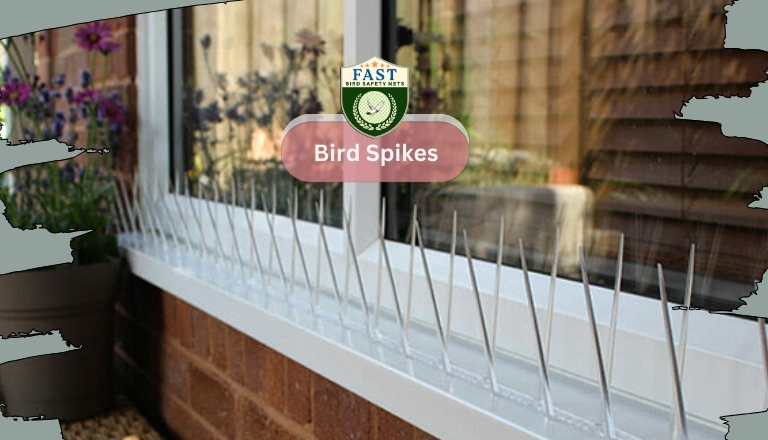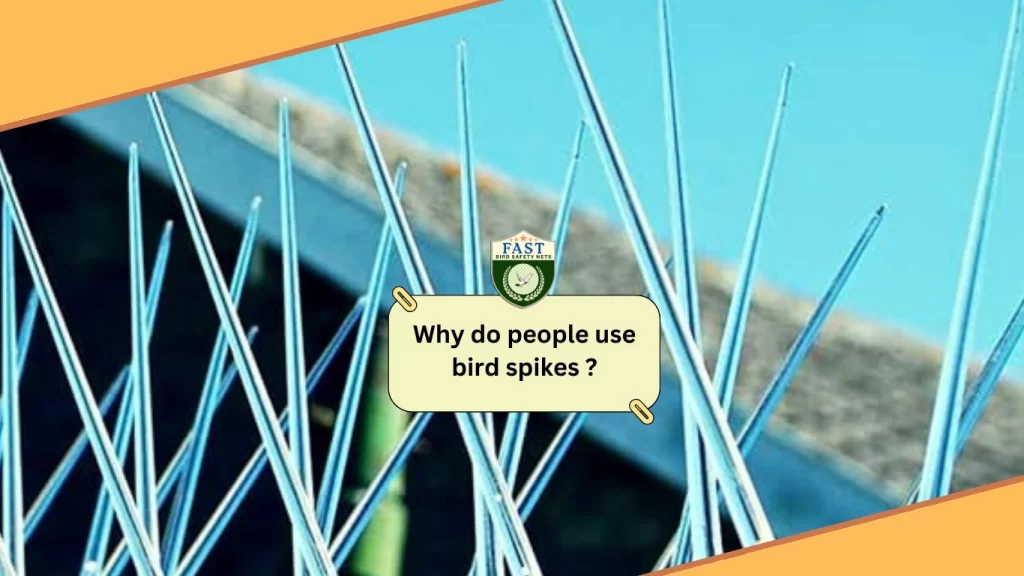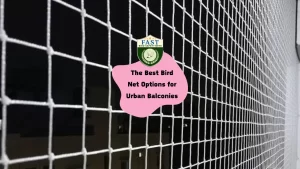Bird spikes are a widely used bird control measure designed to deter birds from landing or roosting on surfaces such as ledges, rooftops, and signs. With their simple yet effective design, bird spikes provide a humane and non-lethal solution to bird-related problems encountered in urban and commercial settings. This article explores the reasons why people use bird spikes, their effectiveness, and considerations for implementing this bird control method.
Reasons for Using Bird Control Spikes:
Bird Droppings Prevention: One of the primary reasons people use bird spikes is to prevent bird droppings from accumulating on surfaces. Bird droppings not only create unsightly stains but also pose health risks due to the presence of bacteria, fungi, and parasites. By installing bird deterrent spikes, property owners can discourage birds from roosting or nesting, thus minimizing the accumulation of droppings.
Property Protection: Birds, particularly pigeons and seagulls, can cause damage to buildings, structures, and equipment by perching on ledges, gutters, and rooftop edges. Spikes act as a physical barrier, preventing birds from accessing these areas and thus reducing the risk of damage caused by pecking, nesting materials, or corrosive droppings.
Noise Reduction: Bird infestations can result in excessive noise levels due to bird calls, wing flapping, and other vocalizations. By discouraging birds from congregating on buildings or structures, pigeon spikes help mitigate noise disturbances, creating a more peaceful environment for occupants and neighboring properties.
Airspace Protection: Birds flying in close proximity to buildings and structures pose safety hazards, especially around airports, industrial facilities, and outdoor dining areas. Anti Pigeon spikes discourage birds from perching or roosting on elevated surfaces, reducing the likelihood of bird strikes and potential accidents.
Preservation of Aesthetic Appeal: Bird infestations can detract from the visual appeal of buildings and outdoor spaces, particularly in commercial areas and tourist destinations. Pigeon Spike provide a discreet and effective solution to bird control, preserving the aesthetic integrity of properties without detracting from their architectural features or landscaping.

Effectiveness of Bird Spike:
Anti Bird spikes are highly effective in deterring birds from landing or roosting on protected surfaces. Key factors contributing to their effectiveness include:
Physical Barrier: Spikes create an inhospitable surface for birds by presenting an array of protruding spikes or pins that prevent them from landing comfortably. The spikes are spaced closely together, leaving minimal gaps for birds to perch or nest.
Deterrent for Birds: Pigeon Spikes provide a humane alternative to some catching, poisoning, or killing techniques for controlling birds. They merely deter birds from landing without causing harm. The spikes do not injure birds but rather encourage them to seek alternative roosting sites away from protected areas.
Long-Term Solution: When installed correctly, spikes provide long-lasting bird control, requiring minimal maintenance and replacement. High-quality bird repellent spikes made from durable materials such as stainless steel or UV-resistant polycarbonate can withstand exposure to weather elements and retain their effectiveness over time.
Versatility: Anti Pigeon spikes are versatile and can be installed on a wide range of surfaces, including ledges, beams, signs, chimneys, and rooftop edges. They come in various sizes and configurations to accommodate different architectural features and bird species, ensuring comprehensive bird control coverage.
Considerations for Implementing Bird Spikes:
Before installing pigeon spikes, consider the following factors to ensure optimal effectiveness and compliance with regulations:
Site Assessment: Conduct a thorough assessment of the property to identify areas prone to bird infestation and determine the appropriate placement of pigeon control spikes. Consider factors such as bird species, nesting habits, and potential entry points to develop a comprehensive bird control strategy.
Installation Method: Proper installation is crucial for the effectiveness of pigeon spikes. Follow manufacturer guidelines and use appropriate mounting hardware to secure the spikes firmly to the surface. Ensure that the spikes are installed at the correct angle to prevent birds from bypassing them.
Regulatory Compliance: Before installing anti bird spikes, check local regulations and ordinances governing bird control measures to ensure compliance with applicable laws. Some jurisdictions may have restrictions on the use of certain bird control methods or require permits for bird spike installations in specific areas.
Conclusion:
Bird spikes offer a humane, effective, and long-lasting solution to bird-related problems encountered in urban and commercial environments. By deterring birds from landing or roosting on buildings and structures, bird spikes help protect property, prevent damage, reduce noise disturbances, and preserve aesthetic appeal. When implemented thoughtfully and in accordance with best practices, bird spikes provide an invaluable tool for managing bird infestations and promoting a harmonious coexistence between humans and birds.






